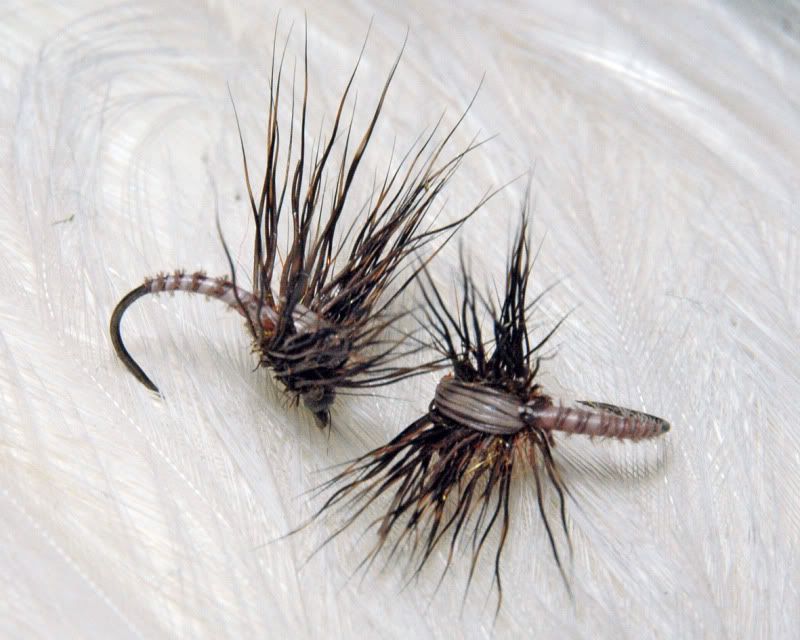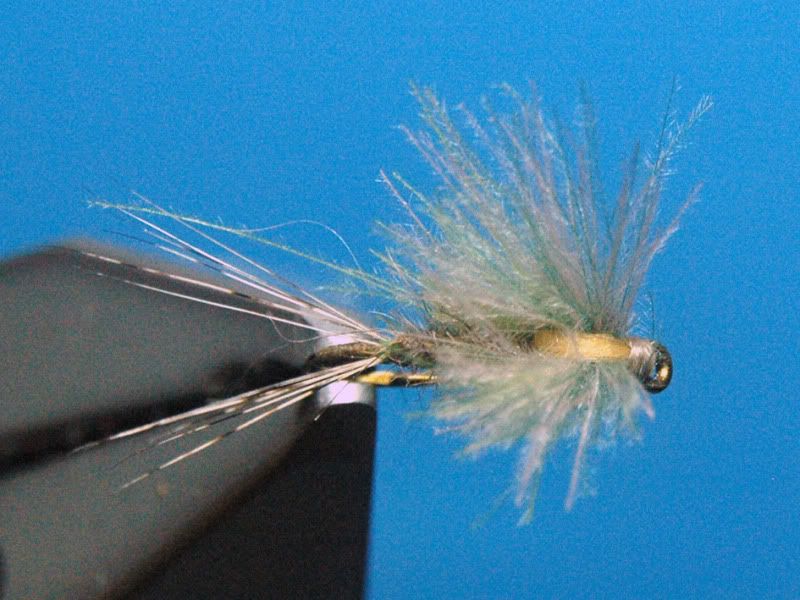I don't use those, but I do use these.
Not so simple to tie, but avoid the inherent problems of heavy wings. You'll find that fly will want to adopt one of two positions on the water. One wing resting on the surface or sitting forward on its hackle with its tail in the air. At least when I tried that kind of thing they did.
The one in my picture is tied as an emerger but you can tie them with a body and tail to represent duns. Deer hair for the larger sizes, snowshoe for middle sizes and CdC in the smaller ones. Here's a CdC one tied as a dun.
One thing that does improve that kind of fly is to tie in some floss as if you are going to use it as the thorax cover on a nymph. Add the deer hair as a single post, then wind the hackle. Pull the floss forward like a thorax cover splitting both hackle and wing. Tie down at the eye. Doing this clumps the hackle fibres on top, causing a parachute like effect when the fly is cast. It helps a lot with presentation.
Cheers,
A.





 Reply With Quote
Reply With Quote